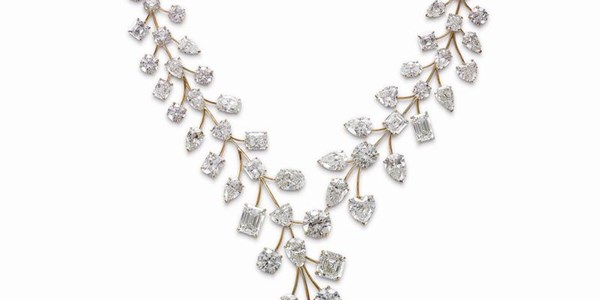Human Interest
World’s most expensive necklace named─── 07:40 Sat, 23 Mar 2013

Mouawad‘s 637-ct. L’Incomparable diamond necklace has been named the world’s most expensive necklace by Guinness World Records, according to media reports, with a valuation of $55 million.
The statement gem on the 18k gold necklace is the 407.48-ct. “Incomparable” diamond. The natural fancy deep-yellow shield step-cut diamond is the largest internally flawless diamond ever graded by the Gemological Institute of America.
The remainder of the necklace consists of 35 round diamonds, 27 pear-shaped diamonds, nine heart-shaped diamonds, five emerald-cut diamonds, five cushion diamonds, four oval diamonds, three Asscher-cut diamonds and two radiant diamonds.
As previously reported, the luxury jewelry and timepiece company unveiled the diamond necklace at the Doha Jewellery and Watch Exhibition, which was held February 25 – March 3. It is the fourth Guinness World Record the Geneva-based company has earned.
In its rough state, the Incomparable diamond weighed 890 carats. It was first made public in its polished state in 1984. It was then put on display in several museums, with the first being the Smithsonian Institute.
forbes.com
The statement gem on the 18k gold necklace is the 407.48-ct. “Incomparable” diamond. The natural fancy deep-yellow shield step-cut diamond is the largest internally flawless diamond ever graded by the Gemological Institute of America.
The remainder of the necklace consists of 35 round diamonds, 27 pear-shaped diamonds, nine heart-shaped diamonds, five emerald-cut diamonds, five cushion diamonds, four oval diamonds, three Asscher-cut diamonds and two radiant diamonds.
As previously reported, the luxury jewelry and timepiece company unveiled the diamond necklace at the Doha Jewellery and Watch Exhibition, which was held February 25 – March 3. It is the fourth Guinness World Record the Geneva-based company has earned.
In its rough state, the Incomparable diamond weighed 890 carats. It was first made public in its polished state in 1984. It was then put on display in several museums, with the first being the Smithsonian Institute.
forbes.com














